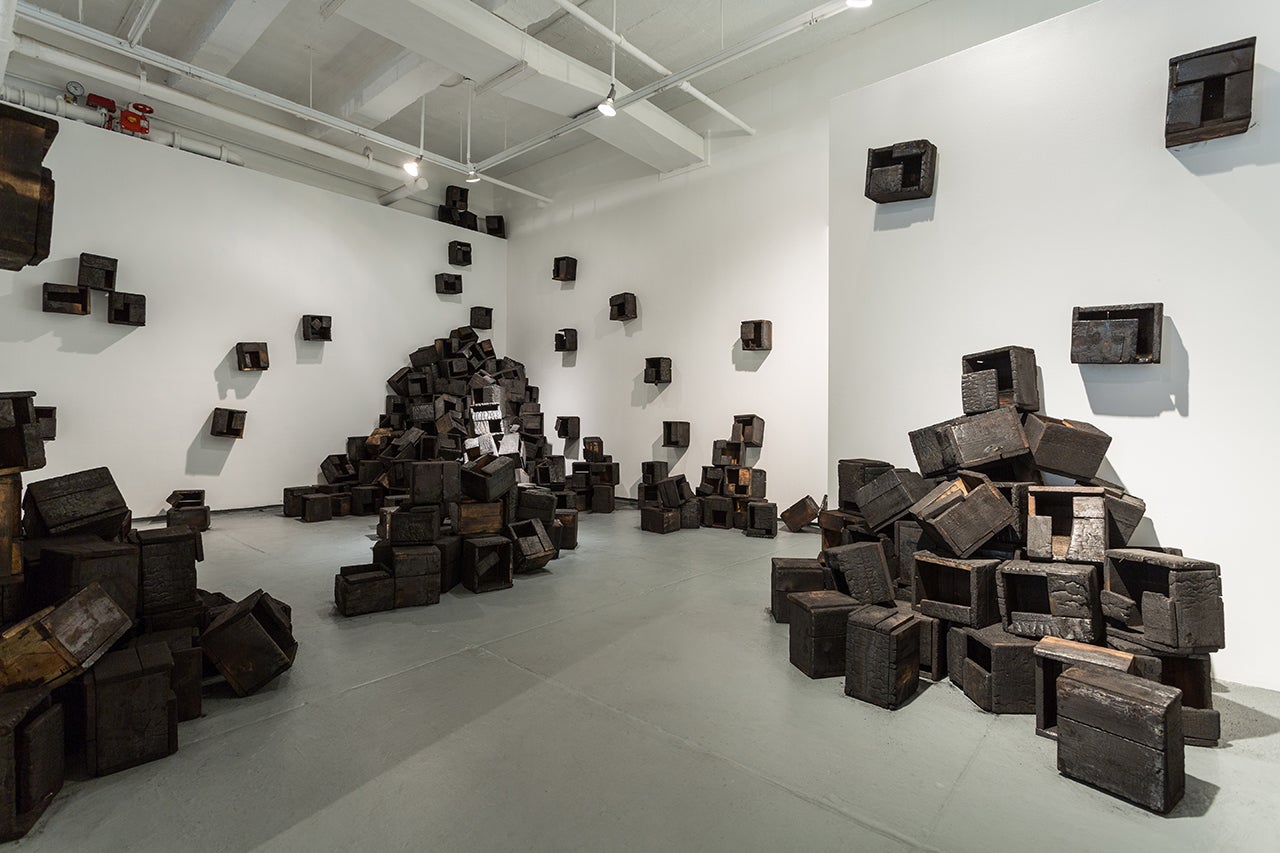Focusing on something we’d rather discard and forget can be difficult, unforgiving work. But it’s work that is often necessary if we hope to overcome our demons and heal old wounds.
That’s why Cuban artist Roberto Diago chooses to focus his work on the roots and role of slavery in Cuban history. The Halsey Institute of Contemporary Art is presenting an exhibition of Diago’s work titled “La Historia Recordada,” which opens this Friday, Jan. 19, 2018, and runs through March 4, 2018. Rich, raw and textured, Diago’s paintings and conceptual installations are made with found materials from his neighborhood, including bits of wood, plastic bottles and rusty metals. The exhibit is part of the College’s semester-long program Cuba en el Horizonte, which examines this island nation’s history, politics, economy, culture and art.
Through careful construction and juxtaposition, Diago’s work explores the roots and role of slavery in Cuban history and culture, offering an important voice in the discourse on racism in that country. As a former plantation society, Cuba and its government have repressed explorations into this topic, thus discussing racism has generally been regarded as an act of resistance to the revolution, which ignored the issue in the interest of solidarity. But for Diago, who is an Afro-Cuban artist, Cuba’s racist past cannot be ignored.
“The work of Roberto Diago provides a window onto an essential chapter that’s been missing in the narrative of Cuba’s social history,” says Katie McCampbell, the exhibit’s co-curator and the Halsey’s curatorial associate and manager of traveling exhibitions. “In the U.S., each generation has been taught to think of Cuba in a different way. We are all witnessing a historic moment in U.S.-Cuban relations, and should take heed when a voice like Diago’s reaches out to us. Armed with Diago’s work and his powerful message, we can reassess our own knowledge and assumptions about this country that is just 103 miles from our own.”
RELATED: Learn more about the Cuba project and how it got started.
McCampbell is grateful for assistance from political science professor Mark Long, whose help was invaluable in orchestrating this exhibition. Long translated all of the exhibition’s materials into Spanish so that the presentation is bilingual and can accommodate a broader audience.
In conjunction with the exhibition, Juan Carlos Alom’s 16mm black-and-white short film, Habana Solo (2000), will be shown in the Halsey’s microcinema. Habana Solo is a multisensory portrait of the city of Havana. The film features improvised musical solos by Cuban musicians tasked with translating the city they inhabit into sound. The musical solos are paired with abstracted footage of the city, making palpable the very spirit and essence of Havana.
As a complement to the exhibit, Spanish professor Matthew Pettway will give a talk on race and slavery in Cuba on Tuesday, Feb. 20, 2018, at 6:00 p.m. at the Halsey. In addition, the Halsey’s staff will present a special one-night event titled “Images of Cuba,” on Tuesday, Jan. 23, 2018, at 6:00 p.m. This will be a presentation of photographs that faculty, students and staff members at the College have taken on their travels to Cuba. The presenters will provide their own perspectives on Cuba and the changes they’ve seen in recent years. The presenters include:
Professor Lola Colomina-Garrigos, director of the Latin American and Caribbean Studies Program
Professor Sarah Owens, director of the First Year Experience
Professor R. Grant Gilmore, Addlestone Chair in Historic Preservation
Kaylee Lass ’16, assistant to the director and chief curator at the Halsey
Senior Trey Gillespie
Junior Landon Hardy
Feature photo: Ciudad de Ascenso, an installation by Roberto Diago






